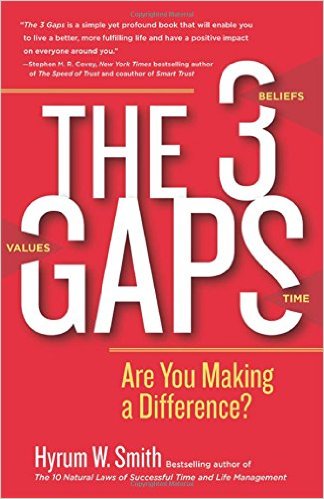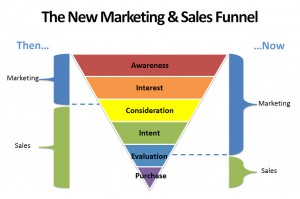Fix Sales problems: Are “Gaps” Holding Your Sales Team Back This Year?
Do you have Gaps that need closed to improve your sales team’s performance this year? Is your team hitting their sales plan or do you have a sales problem that needs fixed? (and fast!) In this post I will share how identifying and closing three key Gaps will improve your team’s performance, sales effectiveness and sales engagement.
I recently enjoyed the book: The Three Gaps, Are you making a difference? by Hyrum W. Smith. If you read my posts you know I like to read…Ok, I read a lot! This book was recommended in one of my social feeds and what captured my attention was the question: “Are you making a difference?” Isn’t that what we all really want at the end of the day?…to make a difference in our families, our church, our social networks and our work? Are you making a difference? The author shared in a quote…
“Inner peace comes from having serenity, balance, and harmony in our lives through the disciplined closing of three gaps”
- Hyrum Smith
So what are these three gaps and how can I help close them to better serve others?
Values Gap
Time Gap
Beliefs Gap
Let’s unpack each one but really spend some time on the beliefs gap.
Values Gap
The values gap is the gap between what you value most, and what you are actually doing. It asks the question: How are you spending your time, energy and resources compared to where and how you want to be spending them? When you read the book the author does a great job of explaining this with a story of a beam stretched over a deep canon. Of all the crazy things to be afraid of, I am afraid of heights so this story really resonated with me. Would I run across this beam for $1000? …Probably not. $10,000? $100,000? Now let’s add some new information…its pouring rain and winds are blowing 35 -50 mph…would you run across the beam for $ 1 million? Unfortunately I think my answer would be no. Now let’s change the scenario… I look across this deep cannon and a rain soaked beam and winds howling and see someone about to drop one of my children over the side…I would run across the beam!
“When daily Activities are in concert with your highest priorities, you have a credible claim to inner peace”
- Hyrum Smith
Time Gap
For as long as I have led teams I have heard; “ I don’t have the time to do all the things you are asking of me and have a life outside of work too” The truth is we are in absolute control of your time. Every minute, every second you are making decisions on how to spend your time. Right now you are choosing to spend time reading this content ( thanks by the way) but you are also choosing not to make that call to the new sales target, have that meeting with your underperforming sales regional manager and so on. I am choosing to write instead of watching TV right now. So we all have “time” it’s how we choose to spend it is the real issue. The author does a great job in sharing three principles to help us better manage time.
Beliefs Gap
This is my favorite gap and the one that I believe if we spend some time on closing we can help heal our companies, ourselves and help our sales teams get back on track. The author shares how we all have a beliefs window through which we see the world and it is a function of our age, life experiences, training and so on. Now picture this window with little see through pictures on it. These are your beliefs. I was taught at a seminar long ago: a thought, true or false, repeated over and over again becomes a belief. So my challenge to you is what if you have incorrect beliefs on your window clouding how you see your market, your companies’ value proposition today, and your salespeople and so on? The author shares a simple test. If you want to know someone’s beliefs, check their behaviors. For example, I believe the best thing I can do to serve my company is be in the market meeting with customers and prospects listening for unresolved problems. I listen and ask questions about those problems, and even note the words they use to describe them. My friends at Pragmatic Marketing would say I am practicing “NIHOTO”. So it should not shock anyone I am writing this post from a Holiday Inn in Indianapolis after attending an industry trade show for one of our markets. If you look at my behavior: travel 50-60% of the time it shows you what I believe. The author also shares how our beliefs drive future behavior.
“Any belief that drives behavior that does not meet your basic needs over time is an incorrect belief”
- Hyrum Smith
So let me ask you the million dollar (goal achieving) questions…
What do you believe about your markets?
What do you believe about your current customers?
What do you believe about salespeople?
What do you believe about your salespeople?
What do you believe about marketing?
How do you believe your buyers shop today?
Now let me ask one more question so you can get back in control of your time and serve someone…
Are your beliefs true (today)? Or are they based on some past experience or how we always to do things around here? How you answer will have more impact on your sales and future sales than you can imagine. If there are disconnects between what you as a leader in your organization believe and what is actually true it is negatively impacting your team’s performance. Your beliefs shape how you interact with team members and even the strategies you ask them to implement.
Let’s assume you are not from a sales and marketing background. Let’s assume you grew up through the ranks of your organization in other areas like accounting and maybe operations like a number of company leaders. Twenty years ago when you were working hard to serve your company, salespeople used to drive you nuts. They seemed to ask for things we were always out of stock on. They complained that what we just shipped was late and when it arrived it was defective and now the customer is upset. They all drove fancy foreign cars and when you were in accounting you saw those expense reports at expensive restaurants, golf and hotels. Or let’s say you had a bad experience with a poor example of a sales manager who only cared about his personal income, a commission junkie as I call them in other posts. So as you look through your window from now the CEO’s seat and you look through little snap shots, thoughts that you have repeated over and over again for the last 30+ years and you believe all salespeople are:
- A pain to deal with…they are just different than everyone else
- Always complaining, never happy
- Are on the customer’s side and not yours
- Not accountable
- Commission junkie’s who only car about themselves and not the long term health of the organization
- They lie
- They sell on price not value
- Spend company money foolishly
- Feel free to fill in your own….
Can you see how those thoughts are plastered over and over again on your window explain why you don’t trust salespeople? (and why they don’t trust you?)
Chances are you probably have met poor salespeople who had bad behaviors ( like I have) but I can assure you not all of us like that. The role of Sales has also changed over the years. Just look at the statistics on “the internet of things” and its impact on how buyers buy. Salespeople today have more resources to sharpen their saw and get more effective at their craft than ever before.
If you study why sales super stars leave organizations just like yours it might surprise you to learn it is not one of your possible beliefs: more money. (you can learn what it really is here) If you do not feel like checking out the link…the number one reason why sales super stars leave is their belief if you value them. So do you?
If you want to get the most out of your sales team it’s time to come clean. Scrub all those past thoughts repeated over and over again off your window and take the time to understand what your salespeople and buyers are really like today and what they are doing and why. You need to practice what I refer to as clean sales management. Once you have done this, I highly recommend you and a few of your senior executives spend time meeting with customers and prospects in your markets to determine if your organizations ‘beliefs match who they really are today. I recommend you conduct win loss interviews or hire someone to do it for you and understand your markets today. They will tell you the unfiltered truth, the truth not clouded by your past.
This a great book and I highly recommend it to leaders or those wanting to be leaders to help you close the three key gaps that stand in the way of your success. We have all read articles on the impact engaged employees can have on the bottom line. Closing the 3 Gaps will fix your sales problems and help your organization get back on track to a profitable sales year.
This book is written on a much broader context to help you close three common gaps to help us as individuals. The author shares that getting our own life together is the first step in having a positive impact on the world. In this post I shared how to apply his content specifically to helping to heal sales problems.












